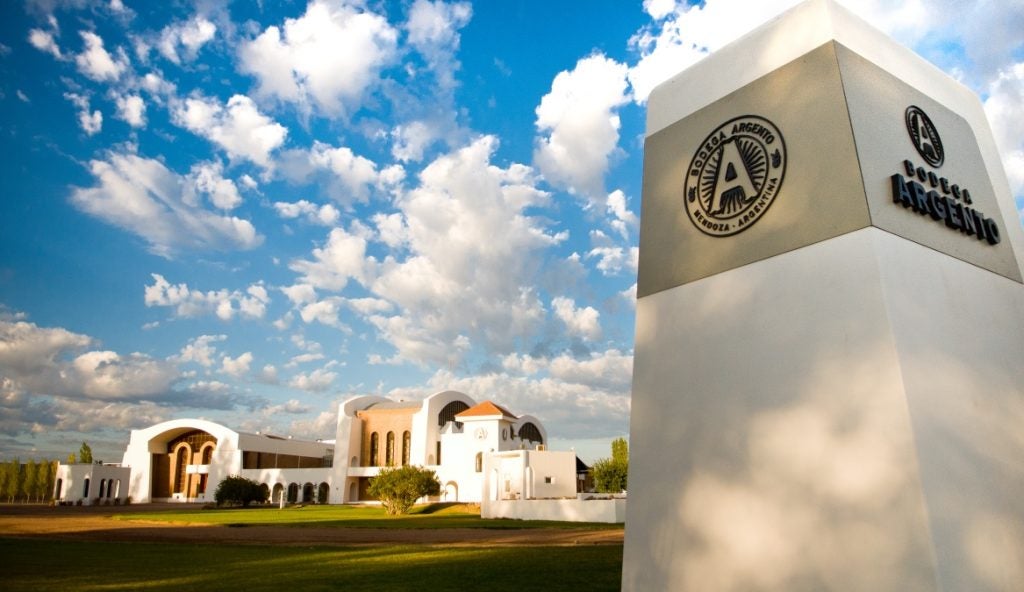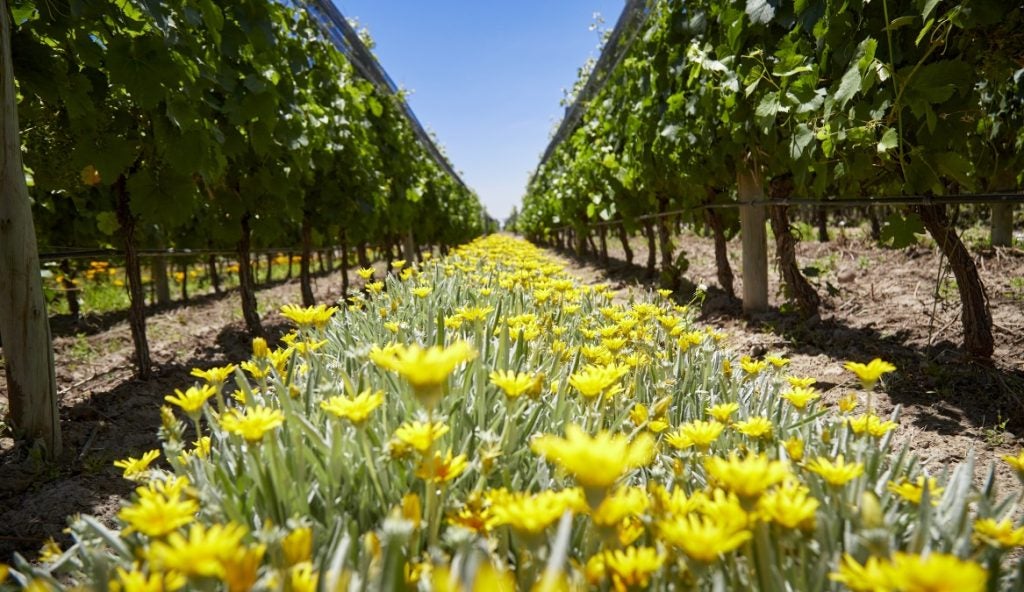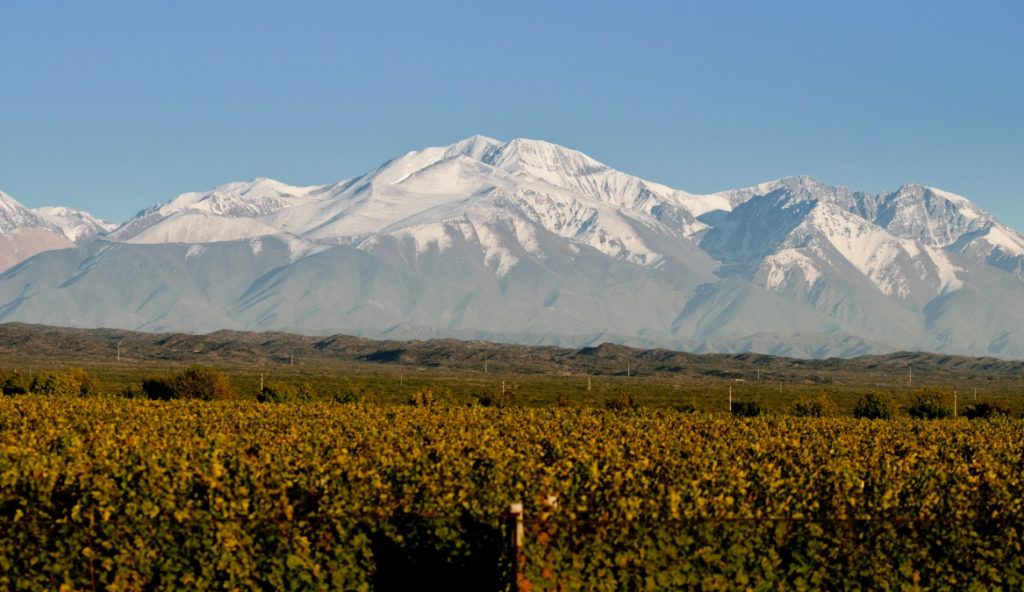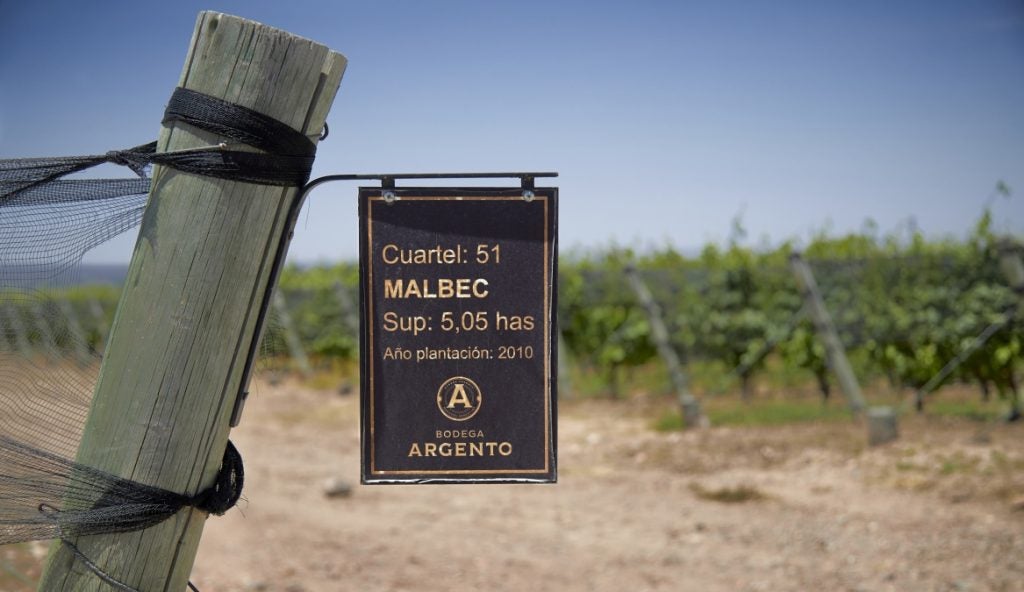
Since joining Argentine wine croup Grupo Avinea in 2021, Andres Valero has been busy.
The group owns five wine brands: Argento, Otronia, Cruz de Piedra, Pacheco Pereda and Cuesta del Madero. Valero has created a group-wide sustainability program focusing on around 20 areas – from operations and resources to staff and local communities.
Grupo Avinea’s wines are sold in around 50 countries. Each brand has its own winery and the group owns around 400 hectares of vineyards – with 388 under production. Most of its vines are in Mendoza region, with 50 hectares at Otronia, in Chubut Province, Patagonia. Its own estates are organic certified – though it also buys between 50-60% of grapes from growers each year.
Just Drinks caught up with Valero during a recent trip to London about his sustainability work and what’s next for the group.
Just Drinks: Does Grupo Avinea have focus brands for its sustainability work?
Andres Valero (AV): In terms of communication, our major brands will be Argento and Pacheco Pereda. However, we have the same programme, requirements and standards in all vineyards and wineries.

For a long time, the wine sector in particular has done a great job teaching consumers about terroir, origin, how weather conditions can have an impact on the wines. But when it comes to sustainability, we did the opposite. We just give the consumer a lot of labels and we say: ‘This is a sustainable one.’

US Tariffs are shifting - will you react or anticipate?
Don’t let policy changes catch you off guard. Stay proactive with real-time data and expert analysis.
By GlobalDataInstead of saying that and depending on the final consumer [to understand], you may highlight one attribute depending on the market. Then in terms of marketing, we decide where and when to highlight each attribute, for example lighter bottles, organic or Fairtrade. To be able to do that, you need to have a whole sustainability programme. If not you will have your sustainable portfolio, and ‘the rest’.
JD: Which are your biggest markets?
AV: The UK. Argentina is a good market for us. And then Europe and the US are growing for us.
JD: And how do those important markets need different sustainability messaging?
One interesting example is organic. Here in the UK, the consumer will probably value organic as good for the place where the wine is being produced, good for the environment in the vineyards.
However, in the US, consumers will be more positive about organic, not only for the positive things that happen in the vineyard but they believe that if the product is exposed to less chemicals it is more likely to be better for them. There are different approached to the same concept depending on the market.
JD: How important is organic certification for selling wine?
AV: Firstly, it is important as a working philosophy. I think that’s the key element. If one market decided one certification was no longer well-recognised by clients, and your whole business depended on that certification, you will lose business. That’s not healthy in terms of economic sustainability.
For us, we have been organic since 2010. When the company started developing their own vineyards – we are one of the largest organic wine producers of Argentina – organic was part of the winemaking philosophy.
We analysed the type of soil we had and the conditions, and our technology and ergonomics team said organic [viticulture] would produce the best product.
We need to do a lot of research and development as most of the handbook of organic production is made for French or Italian viticulture and they have totally different conditions to Argentina.
In an organic vineyard in Argentina, for example, ants are a problem. In Europe they are not, they have other problems. We have done a lot of research to find solutions to avoid having ants eating the fresh blossom. It can really have an economic negative impact if you don’t handle that.

If you have this philosophy then you need to learn how to communicate it to the consumer to create value. And if you go the other way, just for the certification, you probably face this barrier that once the word is not trendy anymore, you’re going to face some business problems.
Never put the certification above a great wine. Choose which certification covers your philosophy. But be flexible, or have a good sustainability plan or backup. All these different attributes that you want to communicate.
JD: Are you looking at alternative packaging?
AV: We have explored lightweight glass and we think that is the solution because many of the other alternative packaging needs a scale of production to be economically viable. You need to invest and you need to have a large market for that. We don’t see that coming very soon.
Also, there is a complexity that tetrapack for example, bag in box, can be 100% recycled but not all over the world. We sell to more than 50 countries.
For us, to have alternative packaging we need to sell the wine to Europe in bulk and bottle in market. In order to invest for the rest of our climate action plan we need to have a healthy balance sheet and alternative packaging is not giving that to us – at least for the moment.
JD: Do you bottle in market anywhere in glass?
AV: Everything is bottled in Argentina.
We have analysed it. So far we didn’t find that the reduction of the foot print was as big to make back the difference that was lost.
A problem is we have a set of certifications, we are organic and Fairtrade, and in order to keep those you need to bottle in the factory that has the same set of certifications. So that limits you a lot.
I’m not saying we won’t consider that in the future. But I think for us the most important thing is to ‘water at home’ to generate jobs in rural areas. That is very difficult. In Argentina we are the middle of a macroeconomic crises, and half of people live under the poverty line. Job creation is very difficult and every time we sell in bulk that means that we are losing jobs in our bottling line.
For us, it is important to find a balance. Alternative packaging is part of a set of things that you can do for sustainability but it’s not the only one. It may be the easiest one but we don’t believe in easy. We’re thinking long-term.
JD: Are you sold in any of the alcohol monopolies?
We have been doing bag-in-box for the monopolies. So it’s something we evaluate for each proposition and specific tender.
Bag-in-box can be great as a packaging but the shelf life is shorter. So, if you do the whole lifecycle assessment of that, you may find losses that tend not to be considered. If you don’t sell it within a year, it will get spoiled and then you will have a lot of losses and that won’t compensate for the carbon that you saved in the rest of the process. There is no one answer for carbon footprint!
JD: In which area is the group looking to invest most in the coming years?
AV: Looking forward, I think probably renewable energy [will be the largest investment]. We have many projects evaluated already. The Argentinian economic crisis meane every time we start a project we may have to wait a year to execute it.
It will be mostly solar. We have the right conditions for solar, we already have the paperwork done, the only thing we are waiting for is the cash flow.
Other investments will be in digitalisation. For us it is very complex, we follow a lot of KPIs, indicators of energy consumption, water consumption. We have a mix of digital equipment but we need someone to physically go and read it. There’s a lot of information that we need each day and we will be interested in investing in the near future in order to have that on our phones, for example. And to be able to fix issues remotely.
JD: How is the macro-environment impacting your ability to move forward with sustainability projects?
AV: In Argentina inflation is around 200%. So it’s difficult to have long-term investment and calculate the return on investment if you don’t know what currency you will be borrowing money from the bank or what interest rate you will get.
Hopefully, I think probably in the next year or so at least, we will get a stable economy. Long term, we will reach the goals that we are proposing – in spite of the macroeconomic situation of Argentina.
JD: In terms of climatic changes, are you noticing many changes?
AV: What we’re seeing very clearly in Mendoza, is changing availability of water. Mendoza is near the Andes Cordillera (mountain range). During the winter we get the snow in the Cordillera, during the summer that snow melts and feeds the rivers and aquifers.

For the last 12 years the snow has been 20%, 30%, some years even 50%, less than average. We have been in a kind of a crisis there. That means that during summer we have less water for production. You need to go deeper to find groundwater.
JD: What are winemakers doing to mitigate that?
AV: There are two different approaches because if you have drip irrigation, you’re already saving 50-70% of the water than if you use flood irrigation. The thing is that many people that have water rights use flood irrigation, because they don’t want to use energy. Generally, most of them are small producers. So it’s difficult for them to be able to invest.
And that will mean that probably for some grapes, the costs of that grape will go higher and that will provide problems.
What we are doing at GV is improving how we distribute the water, knowing the soil. We are trying to emulate Mediterranean weather when you have rain during the winter. If we start drip irrigating during the winter, the amount of moisture in the deep soil – between 1-2m where the roots are – will provide 70% of the water the vines need for producing grapes in the summer.
This way of irrigating uses less water than previous year but still in terms of flood irrigation and irrigation we already have a 50 to 70% improvement to these kind of methods.
JD: When did you start testing this water method?
AV: Last year in one vineyard and this year we will be rolling it out across more.
JD: Would you say water is the biggest environmental issue facing Argentinian winemakers?
AV: For me is the biggest, due to uncertainty. For example, this year we have a good amount of snow – still below average, but higher than previous years – and some people were really happy [about that]. But if you see the statistics, we’re still below the 15-year average. Historical lows make the average lower, so we can’t be happy now when we have average rainfall.
It’s difficult to predict.
Another thing we are suffering, which is a classic influence of rising temperatures, is we are having disrupted or early vintages, which is a logistic challenge. Last year Mendoza had the lowest grape production in the last 60 years due to hail. We had a late frost in November. There were a lot of climatic problems that we used to have but not so many times and not so severe. So we are getting like more severe and more often.
JD: So that was 2022-23 harvest, what is the 2023-24 looking like?
AV: We are in the middle of harvest. The prediction is will say that will be a good harvest – probably not the best in terms of volume but comparing to previous years it will be.
Also in terms of the damage to the plant, when you have a frost, you will see damage for the next few years. So still will have lower yields [from last year’s hail].
In terms of disease and fungus it has been a very healthy harvest.
JD: How much smaller than average is this year looking?
AV: I will have to check the number once the harvest has finished. But informally, talking to oenologists, it’s an average volume and better than last year.
JD: Are you are you trialing any drought-resistant varieties?
AV: We are planting new vineyards – our plan is to reach 600 hectares by 2028. So we are looking at close to doubling our vineyards… and the most important thing that we choose is the rootstock – water-resistant or drought-resistant rootstock – rather than the variety itself.
JD: Which wineries are you doing the expansion for? Will you need to buy land?
AV: Mostly Bodegas Argento and it is land we already own. We have some blocks that were never planted. Of course, we’re always exploring new areas and what will be the next thing in Argentina – as was the case in Chubut in Sarmiento (Patagonia), which started as a small project in 2008 and then grew to a 50-hectare project, Otronia.
JD: Are there any other regions that you’re looking at?
AV: Not particularly, no.
JD: What was the business rationale for expansion?
AV: The main driver has been to depend less on third-party growers in some parts of the business. Also, as we’re expanding or going to new markets with Bodega Argento, we need to keep their identity – to be organic and Fairtrade. That’s difficult if you don’t own the vineyards.
AV: Will the new vines you’re planting be mainly Malbec?
AV: As a rule of thumb in Argentina, it will be mainly Malbec. However, the oenology team will be testing other varieties too.
We were one of the first to plant Cabernet Franc in Argentina – there isn’t much here. At least for the domestic market it’s been very well received, it’s becoming very popular.
We think Cab Franc can be the ‘second best’ red grape from Argentina in the medium or long term.
JD: Argentina has done an amazing job with Malbec, is it a challenge now to diversify the country’s image?
AV: It’s a positive [story] but we need to be challenged to say: ‘Why can’t we generate a new variety or why we cannot get the idea to a consumer that other wines of Argentina can be as great?’
I think we are having a lot of success in Argentina with white wines, especially for the cold areas of Mendoza or Patagonia. They probably won’t compete with Malbec – which can be everything from retailer volume driver to a high-end 99/100-point wine.

With whites – like Chardonnay, Sauvignon Blanc, Pinot Grigio – we will be more focused on high-end wines. I think that there is there are a lot of opportunities for Argentina outside but Malbec is what helped us to be in the main markets in the world.
JD: There’s so much pessimism within your field, do you feel optimistic for the future?
AV: I tend to feel optimistic because sustainability is becoming more mainstream. Sometimes mainstream means that people tend to lose the meaning of what sustainability means. However, I think it’s important that sustainability is part of day-to-day conversations.
I think probably in the next seven years we will see more action coming from the private sector to push this value forwards. Because once you see how issues of sustainability are affecting your business, things move faster.
I’m positive that we will see more change in the near future toward a better system of production, more circular system of production, more fair system of production, as well.
But it’s not something that will come if we don’t push it, talking with sommeliers, journalists, etc. The best way to push the agenda forward is to always have sustainability at the top of mind.



